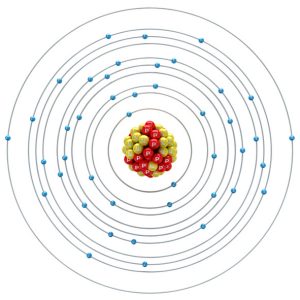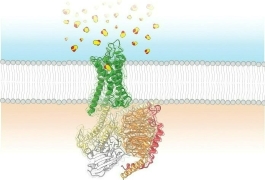Technetium. Why Should I Study That?

Technetium is a weird element. It is the lightest radioactive element (none of its isotopes are stable), it is the only radioactive element in the fifth row of the periodic table, and it’s surrounded by chromium, manganese, iron, molybdenum, ruthenium, tungsten, rhenium, and osmium, all of which have a variety of catalytic uses.
At the American Chemical Society spring national meeting in San Francisco, Alfred P. Sattelberger of Argonne National Laboratory described a decade’s worth of new research on this “hot element.” Working with Kenneth R. Czerwinski, Frederic Poineau, and their students at the University of Nevada, Las Vegas, Sattelberger has produced 40 research papers on various aspects of technetium chemistry, including one recently that discussed how technetium’s nuclear makeup causes it to be radioactive (J. Chem. Educ. 2017, DOI: 10.1021/acs.jchemed.6b00343).
Sattelberger presented the findings during a symposium celebrating the 60th anniversary of the ACS Division of Inorganic Chemistry. “There are three good reasons to study technetium,” he said. First, researchers need to know how Tc compares with its next-door neighbors regarding its synthetic and structural chemistry. Second, the radioisotope Tc-99m, with a half-life of six hours, is a workhorse in diagnostic medicine for imaging the heart and other organs. Sattelberger explained how researchers study compounds made with Tc-99, which is the decay product of Tc-99m and has a half-life of 212,000 years, before trying to make analogs with the short-lived Tc-99m. Third, about 6% of the fission products of U-235 nuclear fuel rods end up as Tc-99, Sattelberger noted. Studying Tc-99 compounds is helping sort out the best options for long-term storage of spent radioactive fuel.
Sattelberger and his colleagues have shown that, with radioactive compounds, simple experiments become difficult and a tour de force approach is needed to study them, commented Debbie C. Crans of Colorado State University, one of the symposium’s organizers. This team has shown, however, that “it is possible for inorganic and nuclear chemists to unlock the box of fundamental technetium chemistry so we can begin exploring what else can be done with these compounds.”
This article is adapted from Good reasons to study technetium chemistry, Chemical & Engineering News, April 6, 2017.




